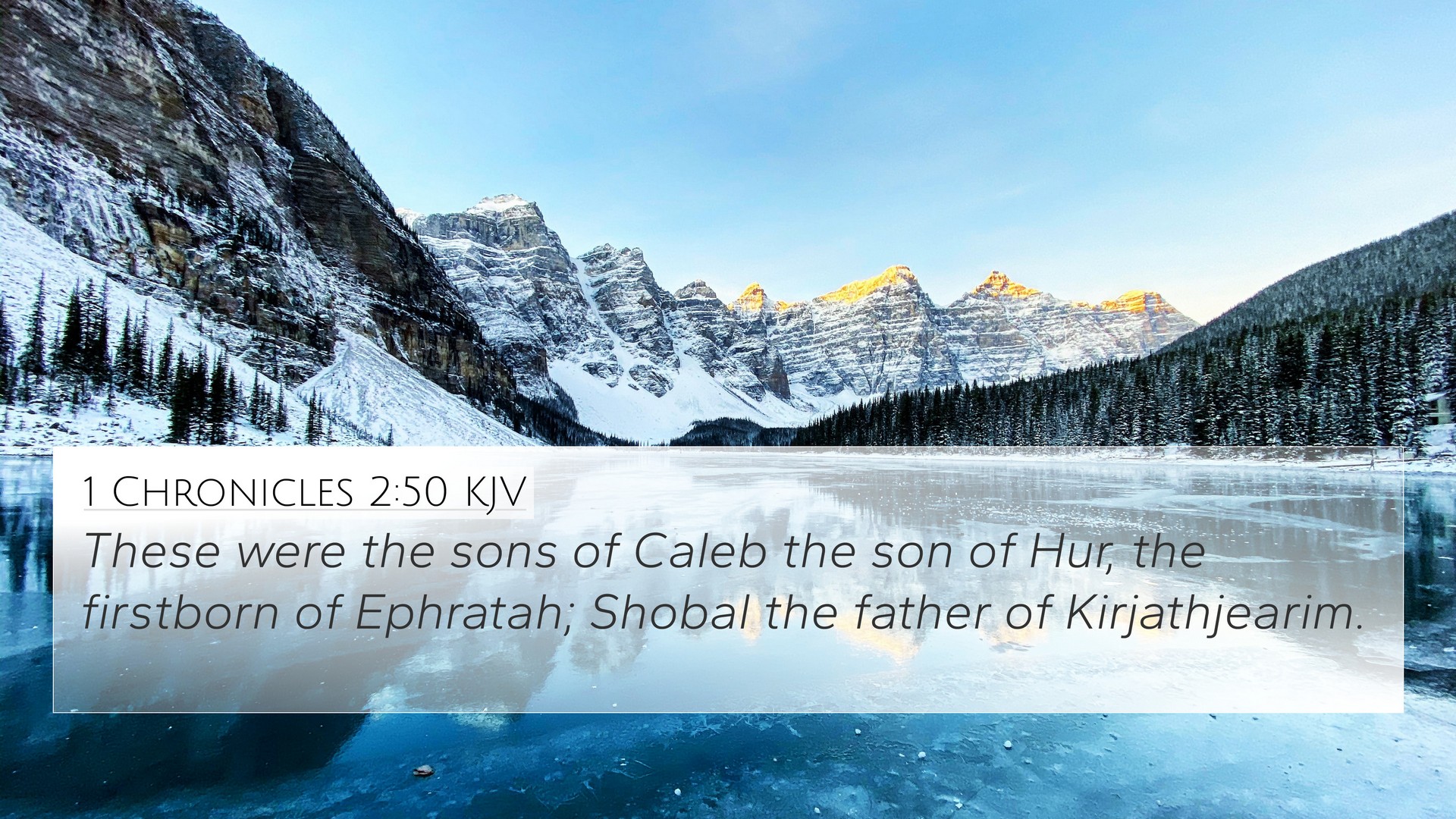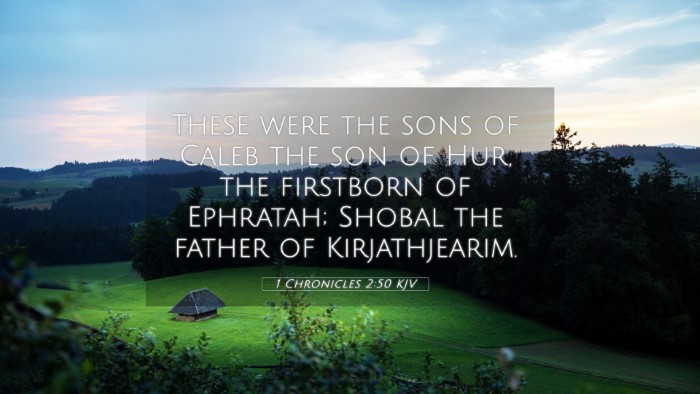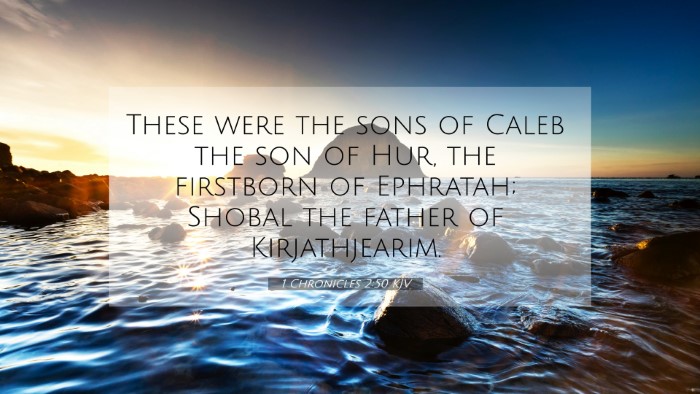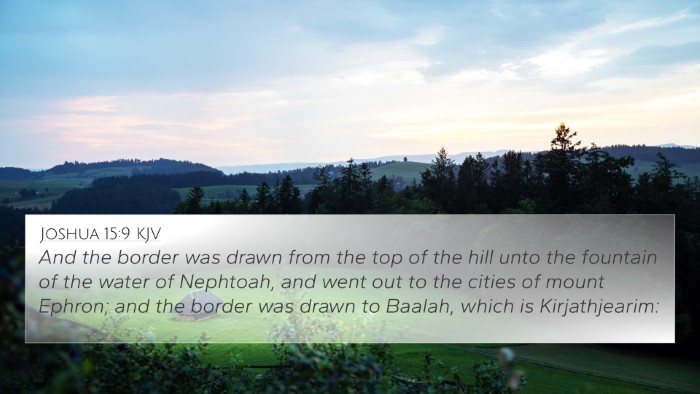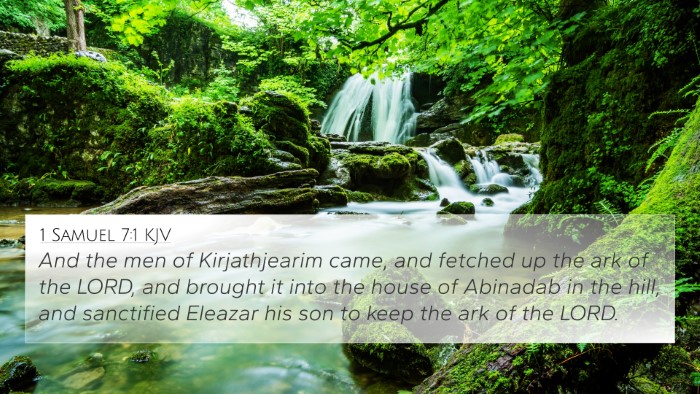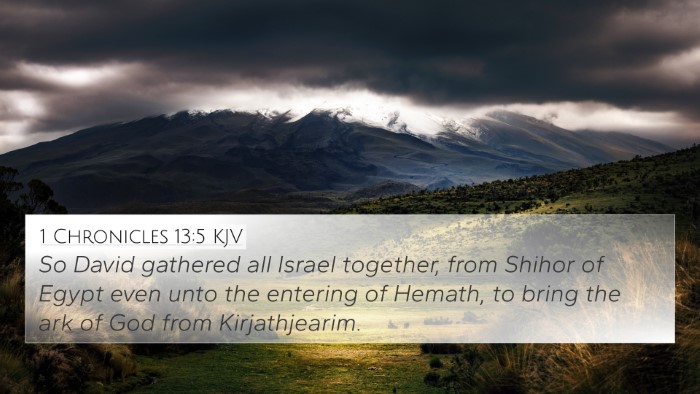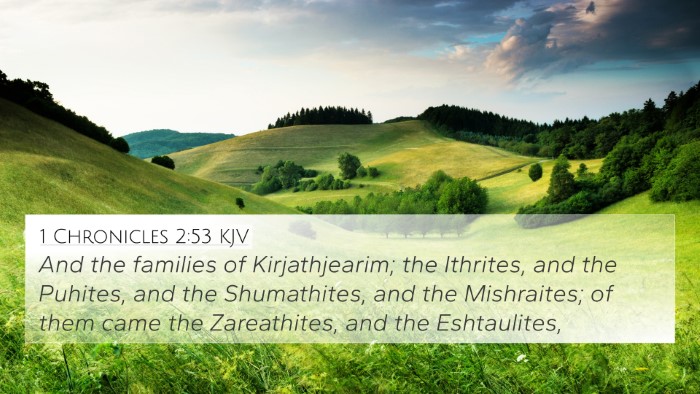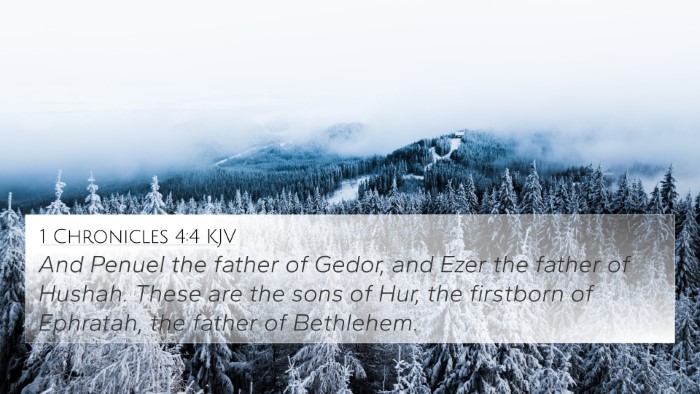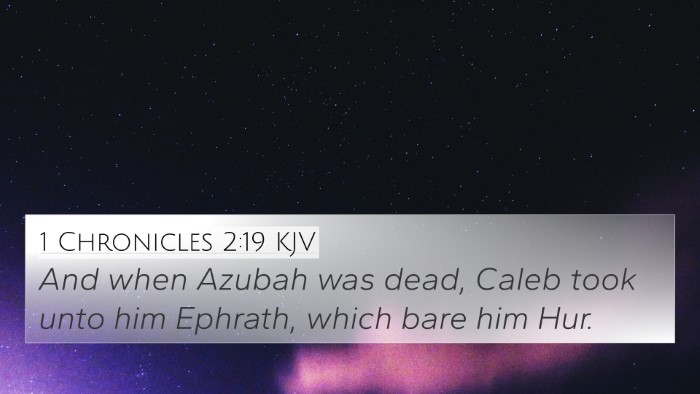The Meaning of 1 Chronicles 2:50
Bible Verse: 1 Chronicles 2:50 states, "These are the sons of Caleb the son of Hezron. The sons of Caleb: Iru, Elah, and Naam."
Summary of Insights
This verse provides a genealogical record, focusing on Caleb, a prominent figure in the Old Testament. Caleb is mentioned often in connection with faithfulness and loyalty to God, especially in the context of the Israelite journey to the Promised Land. Understanding this verse involves exploring the significance of Caleb and the line of descendants that follow him.
Interpretative Insights from Public Domain Commentaries
-
Matthew Henry:
Henry emphasizes the importance of genealogies in the Bible, indicating that they serve as a testament to the heritage of the faithful. He highlights Caleb's faithfulness and how his descendants inherit the blessings linked to their forefather’s loyalty and courage.
-
Albert Barnes:
Barnes points out that the mention of Caleb's sons signifies the continuity of God's promises through familial lines. He explains that Caleb's story represents a legacy of trust in God's plans, and his descendants are integral to the unfolding narrative of Israel.
-
Adam Clarke:
Clarke provides context to the genealogical record by tracing the heritage of the tribe of Judah. He discusses how Caleb is singled out for his faith and contrasts his lineage with that of others, thereby highlighting the divine favor upon those who remain steadfast in their commitment to God.
Connections Between Bible Verses
1 Chronicles 2:50 serves as a crucial link to several key biblical themes and stories. Below are some verses that relate to each other:
- Numbers 14:24 - This verse recounts God's commendation of Caleb for his different spirit and faithfulness.
- Joshua 14:6-14 - These verses narrate Caleb's request for the land God promised him, highlighting his enduring faith.
- Hebrews 11:1-2 - This passage illustrates the nature of faith, echoing Caleb’s example in trusting God's promises.
- Matthew 1:2-3 - The genealogy in the New Testament also acknowledges the significance of Judah, linking back to Caleb's line.
- 1 Samuel 25:1 - Here, the text references Caleb in the context of the renowned man of God, indicating the ongoing impact of Caleb’s legacy.
- Revelation 7:4 - A count of the tribes still holds relevance, including that of Judah, showing the endurance of God's promises through generations.
- Hebrews 4:6 - This verse reflects on those who fell short of entering God’s rest, contrasting with Caleb’s faithfulness that led to his inheritance.
Thematic Bible Verse Connections
The verses that relate to 1 Chronicles 2:50 reveal several important themes:
- Faithfulness: The lineage of Caleb underlines the importance of having faith in God’s promises, which resonates not only in the Old Testament but extends into the New Testament.
- Heritage and Legacy: This genealogical account emphasizes how spiritual legacies are passed through generations, impacting future generations' relationships with God.
- God's Covenant: The terms of God's covenant with His people find expression in the enduring line of descendants who remain committed to His ways.
Conclusion
1 Chronicles 2:50, while a brief generational record, opens a wide avenue of study into the themes of faith, legacy, and God’s faithfulness throughout the scriptures. The insights provided by public domain commentaries enrich our understanding and invite further exploration into the connections between various Biblical texts.
Further Study Tools
If you seek to deepen your study of scriptural cross-referencing, here are some resources to consider:
- Bible Concordance
- Bible Cross-Reference Guide
- Comprehensive Bible Cross-Reference Materials
How to Use Bible Cross-References
Utilizing cross-references effectively can provide a deeper understanding of biblical texts. Consider the following approaches:
- Identify themes that resonate across both the Old and New Testaments.
- Study parallel passages to gain context and clarity on specific verses.
- Engage with a diverse range of commentaries to see various interpretations of connection.
This approach encourages a rich, connective study of scripture, allowing each believer to explore their understanding of God’s Word comprehensively.
